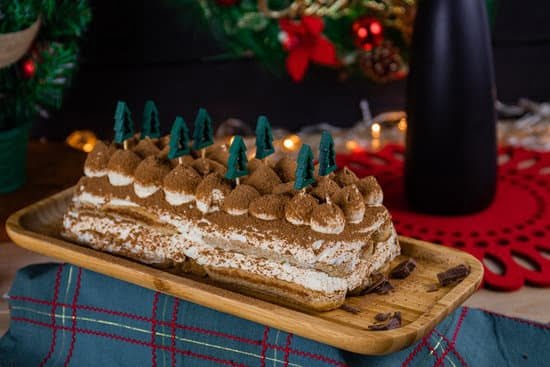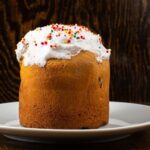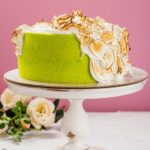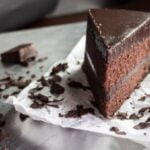Are you looking to add a stunning touch to your cakes with beautiful and edible flowers? Learning how to make flowers for cake decorations can elevate the aesthetic appeal of your baked creations.
Cake decorations play a crucial role in enhancing the overall presentation and allure of desserts, and using edible flowers can bring a touch of natural beauty to your designs. In this article, we will explore the importance of cake decorations, the allure of edible flowers, and set the stage for learning how to create exquisite floral adornments for your cakes.
When it comes to cake decorating, incorporating edible flowers can truly take your creations to the next level. The vibrant colors, delicate shapes, and natural elements of flowers can add a touch of elegance and charm to any cake design. Whether you are decorating a wedding cake, birthday cake, or any other celebratory dessert, mastering the art of making flower decorations will allow you to customize and personalize your creations for any occasion.
In this comprehensive guide, we will delve into the essential supplies needed for creating cake flowers, explore different types of edible flowers suitable for cake decorations, provide step-by-step instructions on preparing flower paste from scratch, share techniques for shaping and coloring various flower shapes, as well as tips on assembling floral arrangements and preserving cake flowers for future use.
By the end of this article, you will be equipped with the knowledge and skills to create stunning flower decorations that will impress your friends, family, and clients alike.
Essential Supplies
When it comes to creating stunning floral decorations for cakes, having the right supplies and tools is essential. Here is a list of basic supplies needed to make beautiful cake flowers:
- Flower paste or gum paste: This is the primary material used for creating edible flowers. It can be purchased pre-made or made from scratch using a recipe that typically includes powdered sugar, tylose powder or CMC, egg whites, and shortening.
- Flower cutters: These come in various shapes and sizes to create different types of flowers. They are essential for cutting out the petals and leaves needed for each design.
- Rolling pin: A non-stick rolling pin is ideal for rolling out the flower paste to an even thickness before cutting out the shapes.
- Ball tool: This tool is used to thin and shape the edges of petals, giving them a more realistic look.
- Foam pad: The foam pad provides a soft surface for thinning out petals and shaping them into lifelike forms.
- Edible colors and dusting powders: Food coloring gels or petal dusts are used to add color and depth to the flowers.
When selecting these supplies, it’s important to choose high-quality materials that will result in professional-looking cake decorations. Many of these items can be found at specialty baking supply stores or online retailers. When purchasing flower paste, cutters, and other tools, consider reading reviews from other cake decorators to ensure you invest in durable products that will last through multiple decorating projects.
In addition to the tools mentioned above, it’s also helpful to have a few additional items on hand such as small paintbrushes for applying color and dusting powders, edible glue for assembling flower parts, and storage containers to preserve finished flowers until they are ready to be placed on the cake. By gathering all of these essential supplies, aspiring cake decorators can begin learning how to make flowers for cake decorations with confidence.
Choosing the Right Type of Flower
When it comes to making flowers for cake decorations, the type of flower you choose plays a crucial role in enhancing the overall aesthetic of the cake. There are various edible flowers that can be crafted to adorn cakes, each offering its own unique beauty and charm. Here are some essential tips for choosing the right type of flower for your cake design:
- Consider the theme: Before selecting a flower for your cake decoration, consider the theme or occasion for which the cake is being designed. For example, if the cake is for a wedding, elegant roses or delicate peonies may be more suitable. On the other hand, vibrant daisies or sunflowers could be perfect for a cheerful birthday cake.
- Color combinations and styles: It’s important to pay attention to color combinations and styles when choosing edible flowers for cake decorations. Harmonizing the colors of the flowers with the overall color scheme of the cake will create a visually appealing composition. Additionally, considering different styles such as clustered arrangements or cascading designs can add depth and dimension to the cake decorations.
- Types of edible flowers: Some popular choices for edible flowers in cake decorating include roses, peonies, daisies, hydrangeas, and more. Each type of flower offers its own distinct look and can bring a different vibe to your cake design. Experimenting with different types of flowers will allow you to discover which ones best complement your specific cake creations.
Learning how to make flowers for cake decorations not only adds an extra touch of artistry to your cakes but also allows you to personalize them according to different themes and occasions. By carefully selecting the right type of flower and incorporating it into your designs, you can elevate your cakes into stunning works of edible artistry.
Preparing the Flower Paste
When it comes to cake decorations, edible flowers can add a touch of elegance and beauty to any dessert. Learning how to make flowers for cake decorations is a valuable skill for any baker or pastry enthusiast. The first step in creating stunning edible flowers for cakes is preparing the flower paste.
To make flower paste from scratch, you will need a few key ingredients and some patience. A basic recipe includes confectioners’ sugar, water, gelatin, and vegetable shortening. By following a step-by-step guide and paying attention to achieving the perfect consistency, you can create a malleable paste that is ideal for shaping into intricate flower petals.
In addition to making flower paste from scratch, there are also ready-made options available in stores. These pre-made pastes come in various colors and can be convenient for bakers who want to skip the preparation process. However, creating your own flower paste allows for more customization and control over the final product.
| Ingredients | Instructions |
|---|---|
| Confectioners’ sugar | Mix with water and gelatin until smooth |
| Gelatin | Heat with water until dissolved |
| Vegetable shortening | Add to achieve desired consistency |
Whether you choose to make your own flower paste or use ready-made options, achieving the right texture and workability is crucial in creating lifelike edible flowers for cake decorations. With the proper preparation of the flower paste, bakers can move on to shaping and crafting intricate floral designs that will elevate their cakes to new heights of artistry.
Creating Different Flower Shapes
Learning how to make flowers for cake decorations involves mastering various flower shapes to create a stunning floral arrangement. One of the most popular flower shapes for cakes includes roses, peonies, daisies, and more. Each flower shape requires different techniques and attention to detail in order to achieve a realistic and visually appealing result.
To create lifelike flowers, you will need to work with flower paste or gum paste, which can be made from scratch or purchased ready-made. When making different flower shapes, it’s important to pay attention to the details such as petal size, layering, and shaping. For example, rose petals have a distinct curved shape while peony petals are more rounded and layered.
When creating different flower shapes for cake decorations, it’s essential to have the right tools and techniques at your disposal. From petal cutters and veiners to shaping tools and drying racks, having the proper supplies is crucial in achieving professional-looking cake flowers. It’s also important to note that practice makes perfect when it comes to creating different flower shapes, so don’t be discouraged if your first attempts are not flawless.
Lastly, when creating different flower shapes for cake decorations, consider the overall theme of the cake and color combinations. Different flowers can evoke different emotions and styles based on their colors and arrangements. Understanding the significance of color combinations will greatly enhance the beauty and impact of your floral cake decorations.
| Flower Shape | Details |
|---|---|
| Roses | Distinct curved petal shape; layered appearance |
| Peonies | Rounded petals with layers; delicate appearance |
| Daisies | Simplistic white petals with yellow center; cheerful appearance |
Coloring and Dusting Techniques
Creating beautiful and realistic flowers for cake decorations involves more than just shaping the flower paste. Coloring and dusting techniques play a crucial role in bringing the floral creations to life. In this section, we will explore how to add vibrant colors and subtle details to the flowers, elevating them from simple shapes to stunning cake decorations.
When it comes to coloring the flower paste, it’s essential to use gel or powdered food coloring for intense pigmentation without altering the consistency of the paste. Start with a small amount of coloring and gradually add more until you achieve your desired shade. It’s always easier to add more color than to lighten an overly dark shade, so approach the process gradually.
Additionally, using dusting powders can add depth and dimension to your flowers. These powders come in a range of colors and are perfect for adding highlights, shadows, and delicate details to each petal. Apply the dusting powder with a soft brush, blending it onto the surface of the petals for a natural and realistic effect.
For those looking to take their cake decorations to the next level, airbrushing and painting techniques can be used to create intricate designs and gradients on the flowers. Airbrushing allows for seamless color transitions and precise detailing, while painting offers complete creative freedom in adding unique patterns or textures.
Mastering these coloring and dusting techniques will enhance your ability to create lifelike flowers for cake decorations that are sure to impress any audience. Experiment with different color combinations and application methods to perfect your skills in bringing edible floral artistry into your baking repertoire.
Assembling the Floral Arrangement
After mastering the art of creating edible flowers for cake decorations, the next crucial step is arranging them on the cake in a visually appealing manner. This final stage of the process will bring your cake to life and create a stunning focal point that will impress any recipient.
The first step in assembling the floral arrangement is to plan out the placement of each flower on the cake. Consider the overall design of the cake and visualize where each flower would best fit. Start by placing larger flowers as focal points and then filling in the gaps with smaller blooms and leaves.
To secure the flowers onto the cake, use small amounts of royal icing or edible glue on the back of each flower. Gently press each flower onto the surface of the cake, being mindful not to damage any delicate petals or details.
Finally, step back and assess your arrangement from different angles to ensure that it looks balanced and visually pleasing from every side. Make any necessary adjustments before presenting your masterpiece.
Tips for Achieving a Balanced Arrangement
It’s essential to create a sense of balance when arranging flowers on a cake. Consider factors such as color distribution, size variation, and visual flow when placing flowers. Additionally, vary the heights at which you position flowers to add dimension and interest to your design.
Another helpful tip is to incorporate some greenery or foliage among the flowers to provide contrast and break up any monotony in your floral arrangement.
One common concern when applying flowers to a cake is damaging them in the process. To avoid this, handle each flower and leaf with care while attaching them to the cake. If you’re transporting a decorated cake, take precautions such as using support dowels within stacked tiers or carrying floral arrangements separately and adding them at the event venue.
With these tips and techniques for assembling floral arrangements on cakes, you are well-equipped to take your creations to new heights with beautiful edible decorations that are guaranteed to be showstoppers at any event.
Storing and Preserving Cake Flowers
When creating beautiful flowers for cake decorations, it’s essential to know how to properly store and preserve your delicate creations. Whether you are making flowers in advance or looking to keep them for future use, following the right techniques will ensure that your edible flowers remain stunning and vibrant.
Tips for Preserving the Flowers
After putting in the effort to create gorgeous edible flowers for cake decorations, it’s important to preserve them properly. One of the best ways to do this is by allowing the flowers to dry completely before storing them. This can be done by placing them in a cool, dry place with good air circulation. Another method is using silica gel or cornstarch to absorb any excess moisture before storing the flowers.
When it comes to preserving the flowers’ colors and shapes, consider using a food-grade sealant or varnish. This will help protect the flowers from fading and ensure that they maintain their vibrant hues over time. Additionally, storing the flowers in an airtight container will prevent exposure to moisture and humidity, further prolonging their shelf life.
Proper Storage Techniques
To keep your cake flowers looking fresh and beautiful until they are ready to be used, proper storage is crucial. Store the edible flowers in a cool, dark place away from direct sunlight which can cause them to fade. It’s also important to handle the delicate decorations gently when placing them in storage containers. Layering parchment paper between each flower can help prevent any damage during storage.
A popular choice for storing edible cake flowers is using clear plastic containers with tight-fitting lids. These containers provide visibility so you can easily see the contents while providing a secure environment that protects the delicate decorations from dust and other contaminants.
Handling and Transporting Cakes With Delicate Flower Decorations
When it comes time to use your preserved cake flowers on a finished cake, it’s important to handle them with care. Choose sturdy flower wires or toothpicks for inserting into the cake without damaging the delicate decorations. If transporting a decorated cake, stabilize the floral arrangement with additional support such as foam blockers or moistened oasis foam for larger arrangements.
By following these tips for storing and preserving your edible cake flowers, you can ensure that your stunning creations stay vibrant and beautiful until they are ready to grace a special occasion with their beauty.
Conclusion
In conclusion, learning how to make flowers for cake decorations can elevate the beauty and elegance of any confectionary creation. The art of crafting edible flowers not only adds a touch of sophistication to cakes but also allows for personalization and creativity.
By following the essential supplies, choosing the right type of flower, preparing the flower paste, creating different flower shapes, mastering coloring and dusting techniques, assembling the floral arrangement, and learning how to store and preserve cake flowers, bakers can enhance their skill set in cake decorating.
Aspiring bakers and seasoned professionals alike can benefit from mastering the art of making cake flowers. Whether it’s for a special occasion or simply to indulge in artistic expression, understanding the intricacies of crafting these delicate decorations is a valuable skill. The ability to create stunning floral arrangements for cakes opens up a world of possibilities for customizing designs to suit various themes and styles.
In closing, I encourage readers to put their newfound knowledge into practice and experiment with different flower designs. With dedication and patience, honing the craft of making cake flowers will undoubtedly lead to exquisite creations. Furthermore, sharing their beautiful cake decorations on social media platforms and tagging this blog could result in recognition for their talent – inspiring others in the process. Happy decorating.
Frequently Asked Questions
How to Make Flowers for Cake Decorating?
Making flowers for cake decorating can be done using gum paste, fondant, or modeling chocolate. You can use flower cutters and shaping tools to create various shapes and sizes of flowers, then let them dry before placing them on the cake.
What Kind of Flowers Can I Use to Decorate a Cake?
When decorating a cake with flowers, you can use a variety of fresh or edible flowers such as roses, daisies, orchids, lavender, violets, or pansies. Just make sure that the flowers you choose are safe for consumption and have not been treated with any chemicals.
How Do You Dry Flowers for Cake Decorating?
To dry flowers for cake decorating, gently wash the flowers and remove any excess water. Place them on a paper towel and allow them to air dry for several hours or overnight in a cool, dry place. Once they are fully dried, they can be used to decorate cakes or cupcakes.

Welcome to our cake decorating blog! My name is Destiny Flores, and I am the proud owner of a cake decorating business named Cake Karma. Our mission is to provide delicious, beautiful cakes for all occasions. We specialize in creating custom cakes that are tailored specifically to each customer’s individual needs and tastes.





